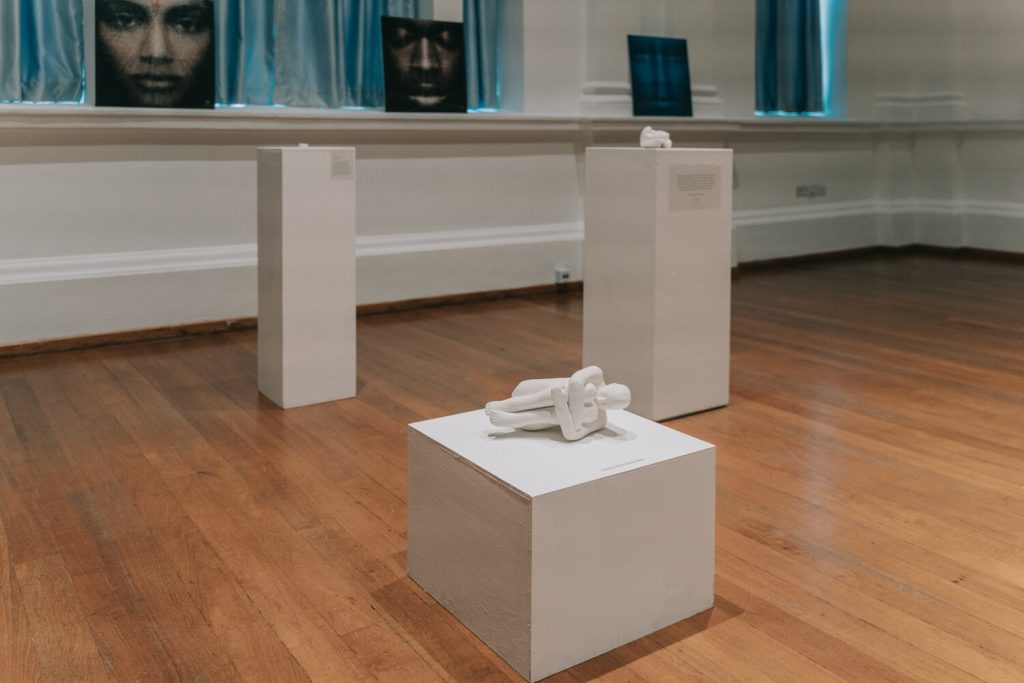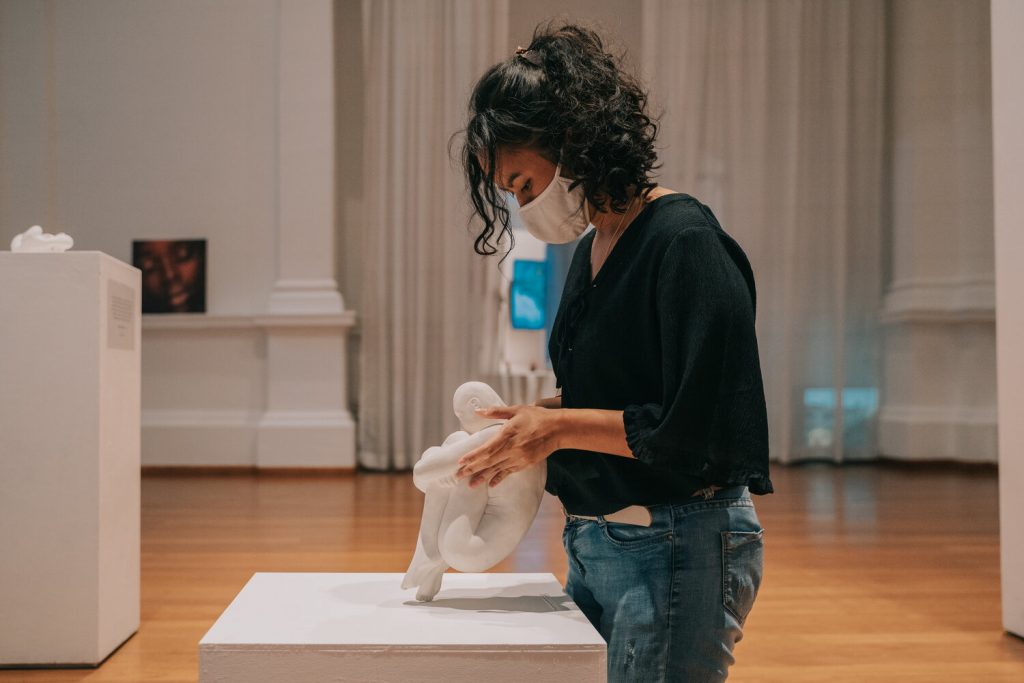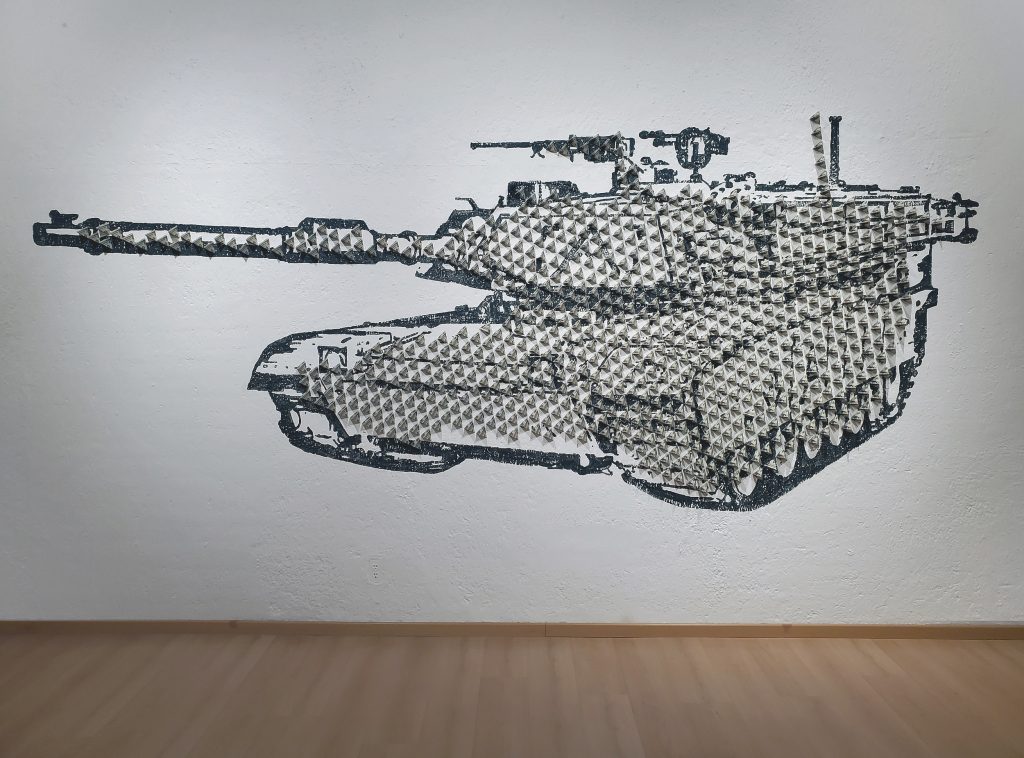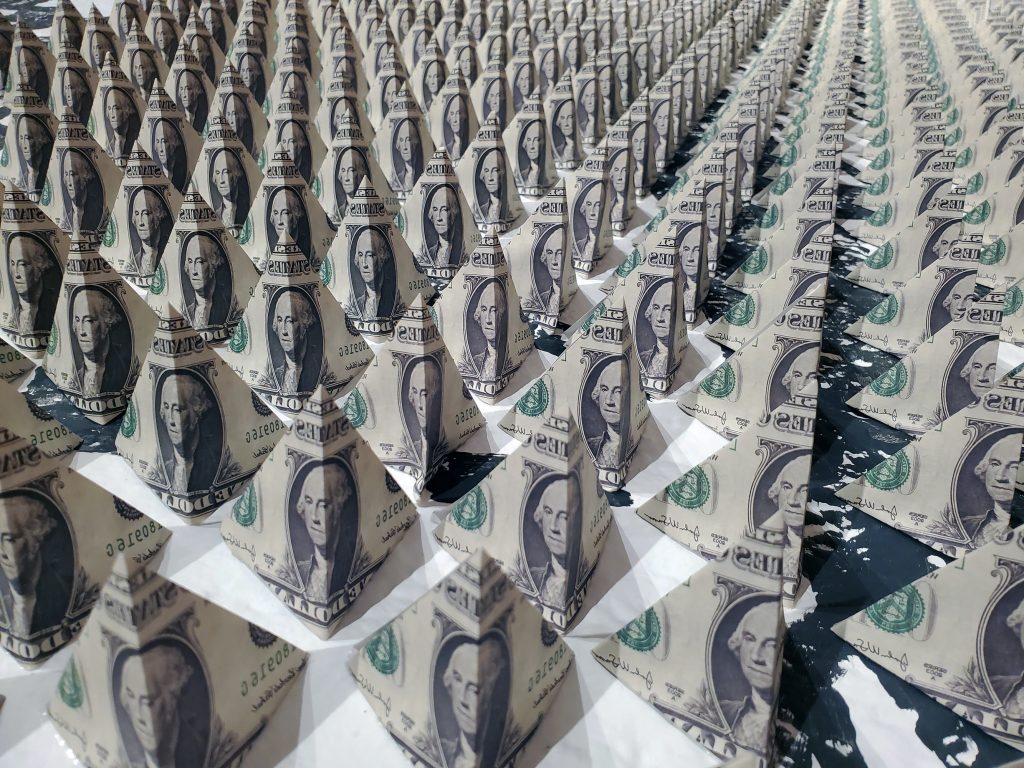Clarice Ng, a Singapore-based artist and illustrator, was thrilled to have the opportunity to showcase her “clay children” to gallery-goers at Power Play Festival, a biennial art festival that moved online this year due to the Covid-19 pandemic.
Her exhibit, In Your Hands, is an interactive series that aims to explore the intimacy and relationship between the artist and the audience.
Ms Ng had been preparing the artwork for the digital art event since June this year. Although she is thankful that the art festival proceeded forth, she expresses her concern: “Once you translate [the artwork] onto a digital platform, I feel like it’s at a risk of not being experienced.”
“The key point of the sculptures was that the audience could interact with it, that it [was] something tangible and three dimensional, something with a weight to it,” Ms Ng explains. “It ties to the main point I really wanted to carry across to the viewer: how people can be very vulnerable and that you have a responsibility and weight when caring or not caring for someone else.”
“With Covid-19 happening, a lot of people are trying to translate the physical experience of going to an exhibition space onto a digital platform – but I feel that it’s a whole different ball-game altogether,” says Ms Ng.
Photo Credit: Power Play Festival
In light of the global Covid-19 pandemic, local art exhibitions and festivals have either been postponed or digitalised.
The inaugural Power Play festival is one that has moved online. “The festival was conceptualised in 2018 – that’s two years of effort in the making, so we wanted it to still happen,” says Jaxton Su, the curatorial director of Power Play Festival.
“Also, we didn’t know if the situation was going to get better. I don’t think the borders will be opening anytime soon, so international artists probably still wouldn’t be able to come yet,” Mr Su elaborates.
The festival features 40 international and local artists, and the exhibits are staged in The Arts House and a warehouse in 20 Depot Road. It centres on exploring power imbalances in the different socio-economic, socio-political, and socio-cultural contexts.
Photo Credit: Power Play Festival
“One of the major impacts [of Covid-19] was that the festival could not be physical because The Arts House wasn’t allowed to be open to the public,” Mr Su says. Also, the space at 20 Depot Road “was a contingency plan, because we had some issues with The Arts House regarding some of the artworks. So, we had to find a space just two weeks before [the festival debuted].”
The organisers still pushed for the works to be displayed physically at the two venues so they could conduct media previews and have proper photography, videography and 360° Virtual Reality experience documentations. “We had to plan for all these instead of what we originally planned, which was a challenge, especially because our core team was only the three of us.”
Photo Credit: Power Play Festival
These struggles are also partly due to the festival’s lack of budget. Mr Su explains: “As we are only 40% funded from our initial project budget, we had to do a lot of things ourselves. It was a very tight budget so we couldn’t afford to pay the artists a lot of honorarium, and because of this some artists chose to pull out because the amount wasn’t enough to cover what they are intending to do for the festival.”
“We were really hopeful at the start, we wanted to make it very big and have a physical festival, where international artists could come and [there] would be a proper exchange between local and international artists.”
These travel restrictions proved to be an issue for Davis Birks, an American visual artist based in Mexico. He exhibited his installation, Empire (Tank), for the festival. The artwork consists of a series of printed, folded, faux US banknotes arranged into the shape of a tank.
Photo Credit: Yulia V. Arkhipova
“Not being able to be in Singapore physically creates a distinct set of challenges concerning the installation Empire (Tank). I needed to create detailed instructions for the installation team,” he elaborates. “Language and cultural hurdles make it even more difficult when you’re trying to clear-up misunderstandings.”
However, he acknowledges that “it [was] a big paradigm shift, a huge challenge for any organisational team, and though I’m sure there were many hiccups, the Power Play team and the artists took the challenges in stride.”
Photo Credit: Davis Birks
The same can be said for Clémentine Marie Jeanne Durand Bedos, a French Interdisciplinary Artist based in London. She performed her work, The Emperor’s New Clothes, live on Instagram on October 18.
Photo Credit: Sophia Alonge
Photo Credit: Power Play Festival
“At first, I specifically designed something completely different that was going to happen in the Old Parliament,” Ms Bedos explains, going on to express her initial worry over how to transcend a physical performance online.
However, that turned out to be a silver lining. “I think the eye is a very masculine sense, vis-à-vis the male gaze. A lot of history of art, at least in the West, is focused on objectifying bodies; it’s all about the eye. So, I like the idea of my art exploring other senses. I think the fact that [the performance] was not in a physical space allowed me to do that.”
Edited by: Anmi Chou Shigeta
Proofread by: Winny Wint Htae




